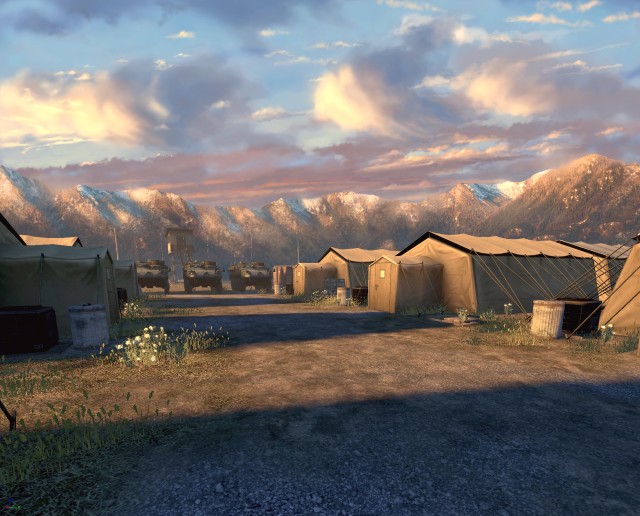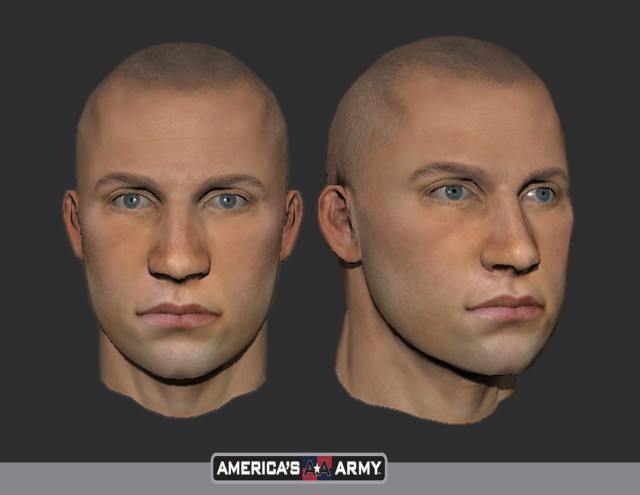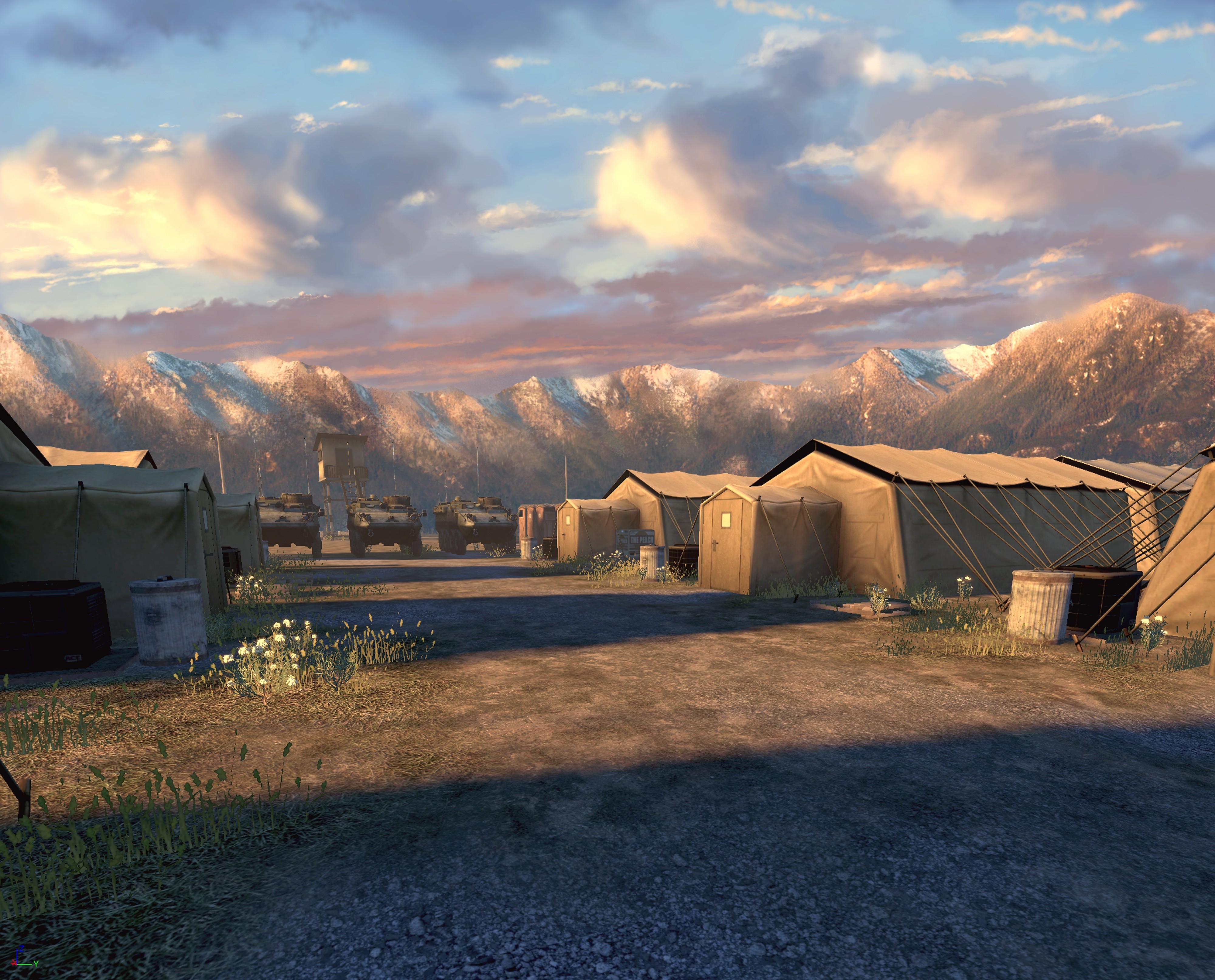In 2000 the Army and the gaming industry forged what is so far an eight-year partnership, combining Soldiers' knowledge of all things Army with industry professionals' understanding of how technology can be leveraged to relate the Army experience.
Col. Casey Wardynski, director of the Office of Economic and Manpower Analysis at the U.S. Military Academy at West Point, N.Y., and head of the "America's Army" program, developed a concept study in 1999 that "envisioned using computer game technology to provide the public a virtual Soldier experience that was engaging, informative and entertaining," according to "America's Army" officials.
The Army set up the Army Game Project at the Naval Post Graduate School in Monterey, Calif., in January 2000. The team was granted unprecedented access to units, training and equipment, and gained information and insights that were eventually modeled in the game to contribute to its authentic Army "feel." In its most widely used form, "America's Army" is an online, downloadable, PC-based game that allows players a portal into the Army, from basic training to Special Forces missions.
Unique to America's Army, however, was the incorporation of values and consequences in a first-person action environment, which set it apart from its commercial counterparts.
"We entered into a marriage of game-industry technical expertise and Army core values, and applied that to something really meaningful," said Phillip Bossant, executive producer of the America's Army Public Applications team.
From its earliest version, "America's Army: Recon" (v1.0.0), players were bound by the Rules off Engagement, teamwork and adherence to the seven Army core values. Two dozen releases later, success in the game is still built upon team play, and still guided by the Army's values of loyalty, duty, respect, selfless service, honor, integrity and personal courage.
"America's Army" was the first to use the Unreal Engine 2.0 to support its game.
"Unreal hadn't been released yet A,A!A,A!- our game came first," Bossant said. "'America's Army' looked nothing like the other games. It had high-quality graphics, animation and sound, even though the game was free to players. I think everyone expected it to be junk. They were all surprised."
The game was first introduced in 2002, and was an instant favorite at the annual industry trade show in Los Angeles.
Eight years later, "America's Army" continues to be one of the top 10 online action games. To keep up with industry technical standards and an ever-increasing consumer appetite for dynamic game play, the public "America's Army" team has consistently used new technologies, platforms and themes to enhance game play. The current version of the game, "America's Army: Special Forces (Overmatch)," combines high-fidelity graphics supported by the Unreal Engine 2.5 with dynamic game-play options to give players a "soup-to-nuts virtual experience within which to explore entry-level and advanced training, as well as soldiering in small units," Bossant said.
"We have virtually taken our players through boot camp and airborne training, and even introduced them to the Special Forces," Bossant added. "Through 'America's Army,' players have learned about rules of engagement, lifesaving, laws of war and Army values."
While the AA team is currently working on a new version of the game using the Unreal Engine 3.0, the current game is still widely popular. There are more than nine million registered users, according to Bossant, and more than 900 fan sites have been established around the world.
The new game, scheduled for release in the coming year, will be faster to download, have better graphics and will expand on Army roles and missions.
"This game will continue to build upon the marriage between thoroughbred game technologies and the Army," Bossant said. "We reviewed lessons from our first nine years, and we are making decisions based on those lessons to make the game a more compelling and comprehensive test drive of the Army. We'll keep the aspects that are great about the current game, and use the new engine to create an even better version."
Most of the developers and artists on the America's Army team have participated in a condensed version of basic combat training at various installations, to get a better feel for what the Army is all about. Through the training and other installation visits, the team has built relationships with Soldiers who understand what they are trying to accomplish through the game.
"America's Army 3.0" will also expand realism within game play. "In everything a player does, from the training phases to mission play, there are consequences for their actions," Bossant said. For example, a player may choose to take on a mission without additional training, but his game play will not be as effective as that of a player who perfected the training phases. Or a player will be able to choose which gear to don, but if he chooses the maximum amount of gear, he will move slower than a player who doesn't. Players don't follow the rules of engagement of conduct themselves according to the Army values are penalized.
"We're figuring out how to make these elements important to virtual players, and through that instill pride in their achievements in the game," Bossant said. "They have a persistent character in the game. If they invest the time, they're likely to maximize their pursuit of opportunities and options. Advancement as a Soldier in the game means something to them. Other games don't offer that."
The driving force behind the new game, Bossant added, is to make players understand that every virtual achievement is significant. Through game play, they're able to begin to understand the Army Values, what they mean and how they pay off in life and to team mission accomplishment. Artists and developers are leveraging what they know about gaming along with what Soldiers are teaching them about the Army to portray significant moments throughout the game, such as basic training graduation.
Bossant also said that with the release of the new game, there would be a release schedule so players know what updates are coming and when they'll take effect. This not only allows players to foresee scheduled enhancements, it gives them an opportunity to train in the game, and to be prepared to take advantage of new missions, roles and capabilities.
"We anticipate that potentially profound moments become possible in the game," Bossant said. "We can get your heart racing, but can you have an emotional response to what you do in the game' If we can accomplish that, we have an opportunity to add a whole new level of depth to our virtual world."




Social Sharing